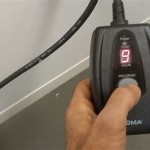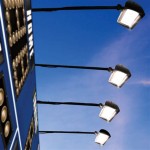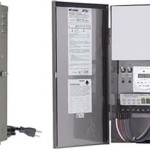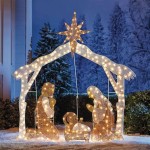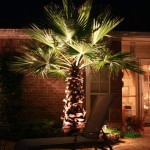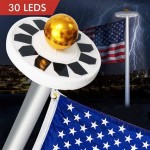Outdoor Wall Wash Lighting Placement: A Comprehensive Guide
Outdoor wall wash lighting plays a crucial role in enhancing the aesthetics and functionality of any exterior space. By illuminating walls and architectural features, these lights create a dramatic visual impact, highlight architectural details, improve safety, and extend the usability of outdoor areas. However, achieving optimal lighting effects requires careful consideration of placement and design elements. This article provides a comprehensive guide to outdoor wall wash lighting placement, covering key factors, benefits, and practical tips.
Understanding the Basics of Wall Wash Lighting
Wall wash lighting involves illuminating a vertical surface with a wide beam of light, creating a uniform, evenly spread wash of light. This technique is commonly used for architectural accentuation, highlighting building facades, walls, or other vertical elements. Different types of lights, including LED strips, floodlights, and wall sconces, can be utilized for wall wash lighting, each offering distinct characteristics and capabilities.
The key to achieving a successful wall wash lies in the proper placement and aiming of the light fixtures. The goal is to create a smooth, even illumination without harsh shadows or glare. This requires understanding the interplay between light source, distance, angle, and the surface being illuminated.
Essential Considerations for Outdoor Wall Wash Lighting Placement
Proper placement of outdoor wall wash lighting is essential for optimizing its visual impact and functionality. Several key factors should be carefully considered before installation, including:
1. Surface Type and Texture
The surface being illuminated plays a significant role in how light interacts with it. Smooth surfaces, like stucco or concrete, generally reflect light evenly, while textured surfaces, such as brick or stone, can create uneven lighting patterns with more shadows. Understanding the surface type helps in determining the appropriate light source, beam angle, and distance for optimal results.
2. Desired Lighting Effect
The intended effect of the wall wash lighting should guide the placement decisions. For example, a dramatic accentuation of a particular architectural feature requires strategically placed lights with a narrow beam angle, while a subtle highlighting of an entire wall may necessitate a wider beam angle and multiple fixtures.
3. Ambient Lighting and Darkness
The existing ambient lighting conditions, as well as the desired level of darkness, are crucial considerations. Wall wash lighting should not be too overpowering in well-lit areas, while in darker spaces, it should provide sufficient illumination without causing glare. Determining the desired contrast between the illuminated surface and its surroundings is an important aspect of placement.
4. Light Source and Beam Angle
Different types of lights have varying beam angles and intensities, affecting the resulting lighting effect. LED strips, for instance, typically have a wide beam angle ideal for covering large areas, while floodlights with adjustable beam angles offer greater control over the light distribution. Choosing the appropriate light source based on the desired effect and specific requirements is crucial for achieving optimal results.
5. Distance and Angle
The distance between the light fixture and the surface being illuminated influences the intensity and spread of the light. Closer distances generally result in brighter, more focused illumination, while further distances create a softer, more diffused effect. The angle at which the light is aimed also plays a significant role, as a steeper angle can create harsher shadows, while a shallower angle produces a more even wash.
Practical Tips for Effective Wall Wash Lighting Placement
Applying the above considerations in practice involves a systematic approach. The following tips offer practical guidance for achieving effective outdoor wall wash lighting placement:
1. Use a Planning Tool
Begin by creating a detailed plan of the area, including the dimensions of the walls, windows, and any other architectural features. Use software or a sketching tool to visualize the placement of the light fixtures and their intended effect. This visual representation helps in considering the interplay between light sources, distance, angle, and the surface being illuminated before installation.
2. Experiment with Placement
Before permanently installing the fixtures, experiment with different placement options. Use temporary mounting methods to assess the impact of various positions and angles on the desired lighting effect. This allows for fine-tuning the placement until the desired outcome is achieved.
3. Consider Visual Balance
Ensure that the placement of the light fixtures creates a balanced and harmonious visual composition. Avoid placing all fixtures at the same height or in a single line, as this can appear monotonous. Instead, consider staggering the fixtures, varying their heights, and strategically placing them to highlight different areas.
4. Use a Light Meter
Utilize a light meter to measure the illumination levels at various points on the wall. This helps ensure that the light distribution is even and free of harsh shadows. The light meter readings can guide adjustments to fixture placement or angles for optimizing the lighting effect.
5. Account for Glare and Reflection
Be mindful of potential glare or reflections from windows or other reflective surfaces. Avoid placing light fixtures directly facing windows or other reflective elements. Consider using diffusers or other solutions to minimize glare and enhance visual comfort.
Conclusion
Outdoor wall wash lighting placement is a crucial aspect of creating visually appealing and functional outdoor spaces. By carefully considering the surface type, desired lighting effect, ambient lighting, light source, distance, and angle, you can achieve an optimal outcome that enhances the aesthetics, security, and usability of your outdoor areas.
How To Use Wall Wash Led Lights Superlightingled Com Blog
Accent Lighting Wall Washing Vs Grazing 1000bulbs Blog
How To Use Landscape Lighting Techniques
Where To Place Landscape Lighting Tips
Where To Place Landscape Lighting Drost
How To Use Landscape Lighting Techniques
Landscape Lighting Techniques And Types
Outdoor Landscape Lighting Design Tips Ideas Environmental Designs
Illuminate Your Space Wallwashing And Wall Grazing
Fashion Outdoor Wall Wash Lighting Placement Spot Light China Led Flood Made In Com
